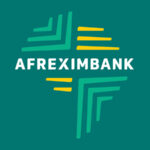African tech startups in the first half of the year ended June 30, 2024, secured $780 million in funding, marking the lowest amount since late 2020.
This figures indicate a major decline of 31% compared to H2 2023 and a stark 57% drop compared to H1 2023, highlighting the challenging funding environment, according to Africa: The Big Deal report.
“Geographically, the “Big Four”—Nigeria, South Africa, Kenya, and Egypt—continued to dominate the funding landscape, attracting four out of every five investment dollars. Within this group, Kenya emerged as the frontrunner, securing a third of the total funding.” Although the concentration of funds in these key markets is significant, it is slightly below the peak of 92% observed in H1 2023,” the Big Deal reported stated.
Kenya received $244 million of the $780 million raised, accounting for 32% of the overall funding, while Nigeria received around $172 million. Egypt took $101 million, while South Africa received $85 million.
From 2019 to 2023, Nigerian entrepreneurs got the majority of cash raised by African startups, accounting for 29% of the $15 billion total investment.
Nigerian entrepreneurs garnered $4.4 billion of the $15 billion that came into Africa during this period.
In 2023, Kenya surpassed Nigeria as the leading source of African startup funding, with Kenyan firms attracting roughly $800 million, the highest amount on the continent.
While Kenya’s portion of Eastern Africa’s investment declined by 25% year on year, it grew from 86% in 2022 to 91% in 2023. During this period 93 Kenyan companies raised $100,000 or more, accounting for 19% of Africa’s total.
Earlier this year, Microsoft Corporation and G42, a major artificial intelligence startup in the UAE, revealed plans to construct a $1 billion geothermal-powered data center in Kenya.
Despite a significant drop in funding since the first quarter of 2024, falling by more than 45% to $466 million, representing a 9% quarter-on-quarter and a 47% year-on-year decline, equity financing accounted for two-thirds of this amount, with debt financing accounting for the remaining third.
This represents a significant increase in debt financing over the historical average of 17% since 2019.
This move reflects a broader trend in the finance landscape, and it could indicate investors’ rising demand for more safe returns in the face of economic uncertainty.










